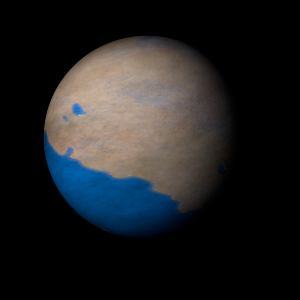|
|
Space Astro
|
Info for exoplanet "Nsubyo-kuke"
| Scientific (actual) data |
|---|
| Name | Kepler-244 c |
| Planet status | Confirmed |
| Radius | 0.183 |
| Orbital period | 9.76729 |
| Semi major axis | 0.087 |
| Discovered | 2014 |
| Updated | 2021-02-05 |
| Tconj | 2455020 |
| Impact parameter | 0.49 |
| Publication | Announced on a website |
| Detection type | Primary Transit |
| Alternate names | 2MASS J19085824+4218049 c, K00864.03, KIC 6849310 c, KOI-864 c, KOI-864.03, WISE J190858.22+421804.7 c |
| Star name | Kepler-244 |
| Right ascension | 287.24° |
| Declination | 42.3° |
| Mag j | 14.306 |
| Mag h | 13.852 |
| Mag k | 13.73 |
| Star distance | 1067.62 |
| Star metallicity | -0.191 |
| Star radius | 0.8 |
| Star temperature | 5554 |
| Star alternate names | 2MASS J19085824+4218049, KIC 6849310, KOI-864, WISE J190858.22+421804.7 |
| Wikipedia article | Kepler-244 c |
Back
| |
| Fictional info (?) |
|---|
| Suggested name | Nsubyo-kuke |
| Planet type | Warm planet |
| The hydrogen chloride has probably photodissociated, and the free hydrogen peroxide has been swept into interplanetary space by the solar wind because of the lack of a planetary magnetic field.
Wind speeds can reach 81 metres per second. |
| Atmosphere | Hydrogen peroxide | 95% |
| Methane | 3.9% |
| Hydrogen chloride | 0.84% |
| Atmospheric pressure | 4 bar |
 |
| Moon | Behichu Hyu | Very small potato shaped ice moon |
| Gyuzu Shi | Very small irregular rocky asteroid |
| Google search for Nsubyo-kuke |
|
Website by Joachim Michaelis
|
|
|
|